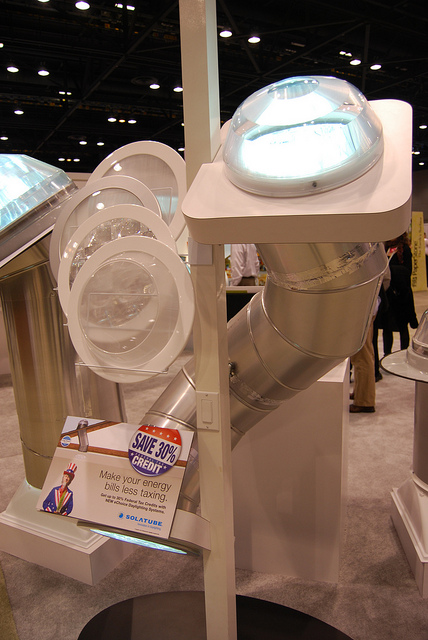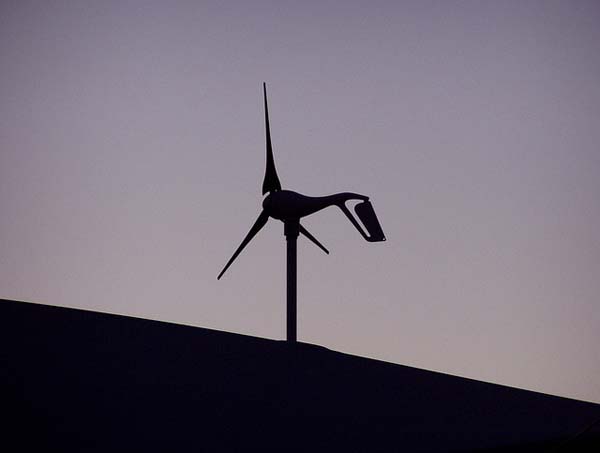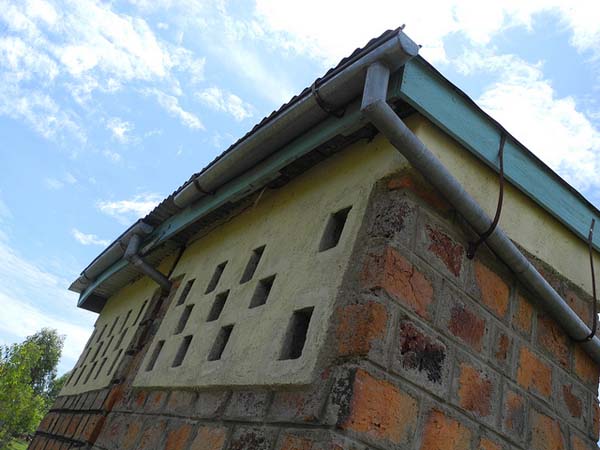If you’re reading this article (or any article on Tiny House Blog) it means that you’re more than likely a fan of tiny houses. It also means you’re probably aware of how energy efficient and eco-friendly most tiny homes are. Simply due to their size, tiny homes are much more “green” than standard or traditional housing. The goal of this article is to present some techniques and ideas to help maximize the efficiency and overall “green-ness” of any tiny house you may already have or are planning to build.
Energy Efficiency
As you can imagine, since tiny homes are so small they do not require a lot of energy in the first place. However, there are some ideas that can be implemented to reduce that energy usage even further.
Water Usage
Water usage is an area that can be improved in almost all houses, big or small. One simple thing you can do is to redirect water from rainfall to nearby gardens or plants. This will save on watering these plants and is an easy way to make sure that rainwater is not wasted. Regarding plants and gardens it is important to keep in mind that planting native plants will help save on water as well because they are more accustomed to the climate and habitat and do not require as much care.
Utilizing natural rainfall can be taken a step further by using this water within your tiny home. It is possible to harvest the water from rainfall to use for showers and other uses inside of your tiny house. There are a variety of way this can be done but if you would like a precise step-by-step description of how to build a rainwater harvesting system along with ways to treat that water, the Texas Water Development Board has provided a free downloadable PDF that explains the entire process in great detail.
Electrical Alternatives
Another area where you can improve further on your tiny house’s efficiency is regarding electricity. There a few different options that can be employed to reduce energy usage.

One option that is rather simple involves installing a solar tube. Solar tubes are similar to skylights in that they provide natural light into the house. However, solar tubes use mirrors to reflect light and produce much more light within the space they are illuminating. Solar tubes are often used in traditional homes to light a room but because of their size, a solar tube in a tiny home can be used to light the whole house. This means that you would be using virtually no energy to light your tiny house during the day. For a more in-depth look at how solar tubes work, read this article from EcoBroker.

Another option for energy is to use wind power. Wind turbines can be especially effective for tiny houses as they can produce enough energy to run the whole house. Small wind turbines designed for homes or “microwind turbines” can also store energy in batteries that can be used on days when there is no wind.
Tiny homes are very environmentally friendly and tend to be quite efficient. They provide a style of living that is very “green” and responsible. However, implementing some of the ideas mentioned in this article can increase efficiency and help ensure that your tiny home has little to no impact on the environment.
Wade Myer grew up under the watchful eye his father, a contractor, who taught him the tools of the trade. Even though he can swing a hammer with the best of them, he’s always been drawn to the written word where he can frame sentences rather than walls. Currently he writes on behalf of Steiner Homes LTD. who builds St. John custom homes.

Thank you for this article! I love reading about all types of ways to “green” a space.
seems like the idea of a solar tube assumes you have space between your roof and ceiling, which in a tiny home is rarely if ever the case.
I don’t read that assumption. A friend of mine installed them in his roof, which is just ‘roof’. Sealing it was the most difficult part but they haven’t leaked yet!
Check the laws in your area about water harvesting. Using rain water inside the home is illegal in some places. If that’s the case where you live, try to change the rules rather than break them, it will benefit the whole community.
“using rainwater inside the home is illegal in some places”
I’m imagining my great grandmother, who lived on a subsistance farm, hearing that. Alas, the statement made me ponder, in a larger sense, the disconnect modern civilization fosters with the basic gifts of the earth.
Sad to say but, I’ve seen articles mentioning rain water harvesting/reuse is illegal in Co and WA. Why I can’t imagine. I recently watched a movie The Lorax where fresh air is controlled- is that next?
I don’t see why a tiny house (or otherwise), which is properly designed, would ever need electrical lighting during the day. I have a 1500sqft house and I work from home, but the lights are never needed. Every room I use has two sources of natural light through windows.
Also, let’s confuse tiny with efficiency. They are not the same. All these ideas are applicable to all sizes of house. Going small does not make you efficient. It might reduce some of your bills, but your consumption per sq ft might not change at all. That’s just a scaling factor, not efficiency.
Depends on how much natural light you have actually available during the day, which depends on season,latitude and weather. Also depends on what you might be needing light for. Close detailed work or just getting around without bumping into things? 8 am below the 49th parallel in July is a whole different thing to 10 am north of 60 in January. On Dec 31 this year Whitehorse Yukon will get 5 hours, 46 minutes of daylight,sunrise 10:10 am, sunset 3:56 pm. Los Angeles on Dec 31 will get 9 hours, 55 minutes, sunrise 6:58 am, sunset 4:53 pm. http://www.sunrisesunset.com/ for some comparisons.
In a tiny house with a solar tube you can put several solar lights in a vase/box/bucket below the solar tube. At night you can use those solar lights to light your house. That way, you use the sun to light your house ALL the time.
Love it! An indoor solar charging station! No worries about forgetting your stuff outside or while you’re away. Has anybody tried to DIY one of these tubes? The price for store-bought is quite high.
Sad about places that don’t let you use rain water . Maybe it’s only using it to drink and bathe in . Because you do need to be sure not to use rain from the first few minutes after it starts raining due to contaminates like dirt and animal poo on the roof getting in the water . But for gray water like flushing the toilet and watering the garden or yard …
I use the most basic rain water collection available – an extra trash can with a tight fitting lid where the water runs off the roof. Remove the lid when it’s going to rain. Put it back on afterwards to keep the mosquitoes down. I only use this rain water for plants and the bird bath outside.
I would rather have the health authorities be excessive instead of lax when it comes to using rain water. I’ve been to 3rd world countries. I’ve had a drink of cool, crystal clear water that made me ghastly ill for quite some time. Many children worldwide die every day from drinking bad water. Having diarrhea for a couple of days makes one feel bad. Having diarrhea for a year or more can kill.
You have to take sanitation seriously especially with making clean water.
There is no reason why you couldn’t use rain water, filtered and treated for all house hold uses. Certainly for clothes washing and toilet flushing, car washing and gardening. Wouldn’t the water heater kill most things if set high enough?
In the mid west and other places where the aquifers are being pumped dry and well must be deeper and deeper this will have to be done eventually, so we might as well start working”the bugs ” out now, so to speak. Educating people to disinfect there own rain water must be cheaper than drilling deeper or pumping and treating river and lake water.
Our water is pumped from a river, treated with toxic chemicals and piped to our house where we have to install filters to take out the chemicals!
there are programs in my area that will give you a tax break for collecting rainwater. the hoops make it almost impossible and said system has to be in use for 3 years. of course that comes at a cost for review and inspection. what you get for a tax break is minimal and not worth the time to do the right thing.
the program in my town.
http://www.ankenyiowa.gov/index.aspx?page=1239